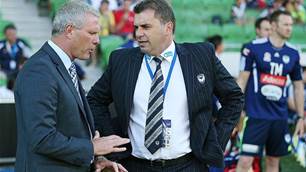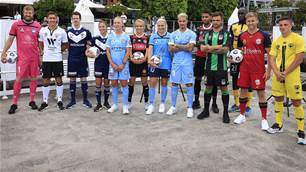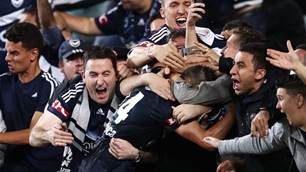THE Smith Review's recommendation that FFA scrap its minimum salaries for players has been shot down as 'unlawful' by Braham Dabscheck, who wrote the report the review was largely based on.
The Hon Warwick Smith AM, who is current chair of the Australian Sports Commission, reviewed the state of football in Australia under orders from the federal government.
While Smith looked at a whole host of issues, the standout feature of his review that was released on Thursday was that the $24 million combined salary cap across the 10 clubs be either maintained or even reduced.
According to Smith, the $32m that the 10 clubs spend on their players, which includes the marquee players whose salaries are not included in the cap, makes up 40 percent of income generated by the A-League, which he said is double that of the likes of the AFL, NRL and Super Rugby.
But Dabscheck, who is a Senior Fellow with the University of Melbourne Law School and a former Associate Professor at the University of New South Wales, says Smith simply got his numbers wrong.
"Unfortunately, Mr Smith incorrectly compared A-League players' share of revenue with those in other sports, including cricket and rugby, arguing that as A-League players share 46 percent of revenue, this is unsustainable with comparable sports," Dabscheck said.
"Mr Smith's analysis is incorrect for two principal reasons. First, one cannot look at the A-League in isolation from the business of Football Federation Australia (FFA), especially the Socceroos, which are a major driver of game revenue.
"When combined Socceroos and A-League player payments are looked at as a percentage of combined FFA and A-League club revenue, my study found that the players' share of revenue ranges from 21.36 percent to 29.34 percent, depending on the year. Yet, Mr Smith does not refer to this finding in his report."
Dabscheck cited cricket as an example of a sport that raises its revenue in similar fashion, with the national team responsible for much of the income but the state-based teams benefitting as a result.
"This is clearly comparable with the other sports referred to by Mr Smith, which distribute between 20 percent and 26 percent of combined governing body and team revenues to the players," he said.
"For example, in cricket, almost all revenues are generated by the national team. Of course, it is not being suggested that state cricketers should take a pay cut.
"The integrated financial model of cricket (which Mr Smith recommends be maintained for football) enables national team revenue to subsidise the states and build a sustainable career path at state level.
"Clearly, football must do the same, especially given the global market for the services of players."
Dabscheck compared numbers for the respective codes:
- The ARU provides each state with a grant of $4.3m which, for 2008, would have constituted 59.35 percent of player payments;
- In 2008 the AFL dividend to clubs exceeded total cap payments (it was 101 percent) but was 77.47 percent of total player payments;
- In the NRL the approximate shares for 2006 to 2009 were 67.47, 70.32, 71.35 and 70.83 percent; and
- In the A-League, from the year beginning in 2006/07 to 2009/10, the percentage shares were 64.86, 57.31, 51.39 and 48.46 percent.
And according to Dabscheck, it would be unlawful for FFA to abolish its minimum payments to players.
"An A-League footballer is a full-time employee, and the Collective Bargaining Agreement enshrines a minimum salary of $47,094 for players 21 or older, and $38,020 for younger players," said Dabscheck.
"A professional footballer is entitled to the protection of the employment law in this country."
"Mr Smith's recommendation that the minimum payment be removed would be unlawful in every workplace in Australia."
"Further, it is now accepted throughout the world of sport that wherever a salary cap operates, it must be accompanied by a salary floor, which in the A-League is set at 85 percent of the salary cap."
"This is lower than a number of other sports such as the AFL, which sets its floor at 92.5 percent."
Australia's leading academic on the industrial relations aspects of professional team sports, having studied the field since the early 1970s, Dabscheck authored the 2010 study 'The Linkage Between Player Payments and Benefits to Revenue Sharing in Australian Sport' at the request of the Australian Athletes' Alliance.
Related Articles

Kiwi legend: A-League can seize the day post-COVID-19

Backlash over Fox Sports new season launch













